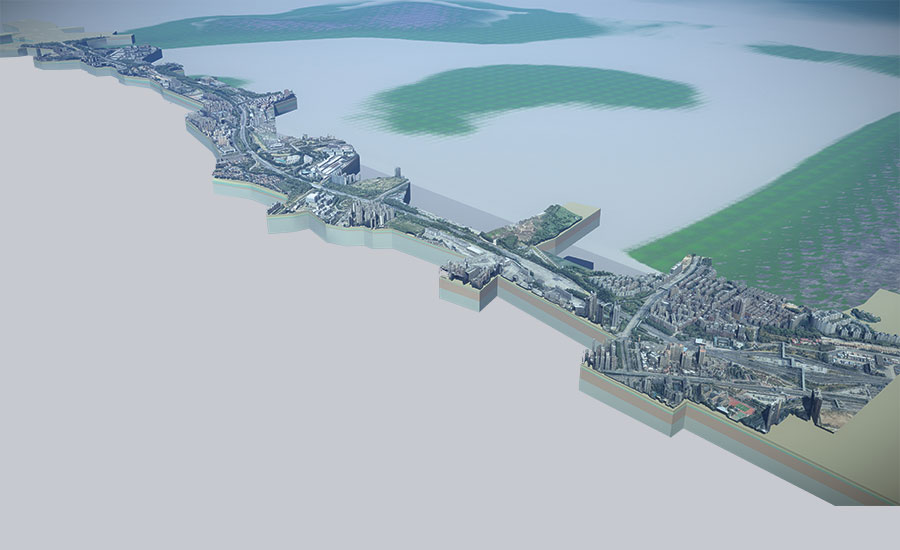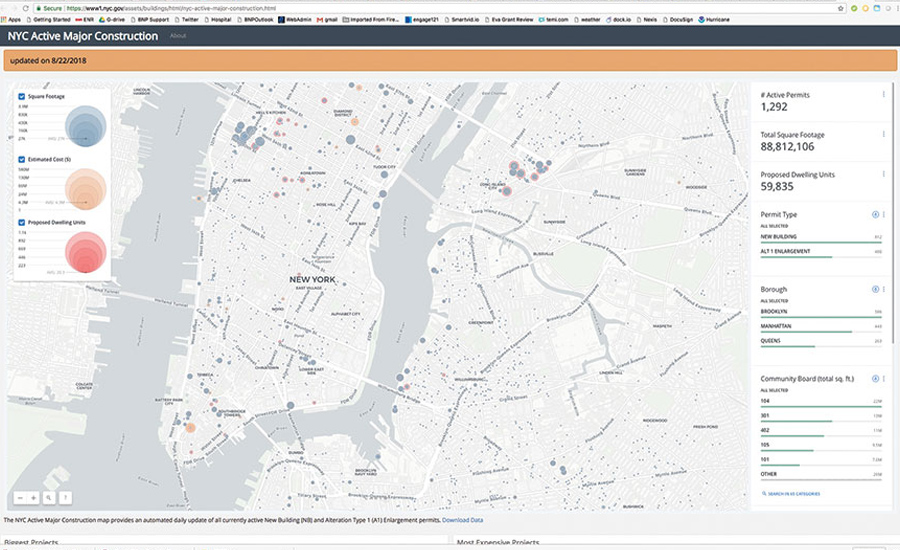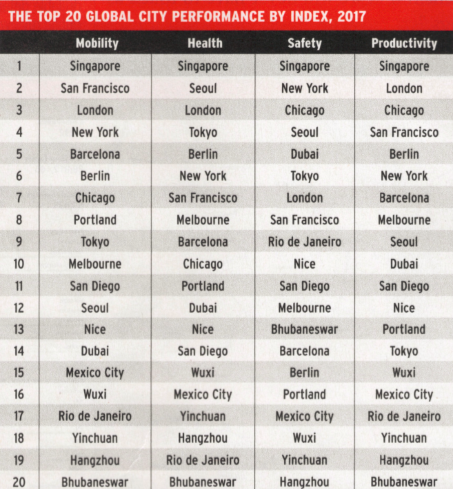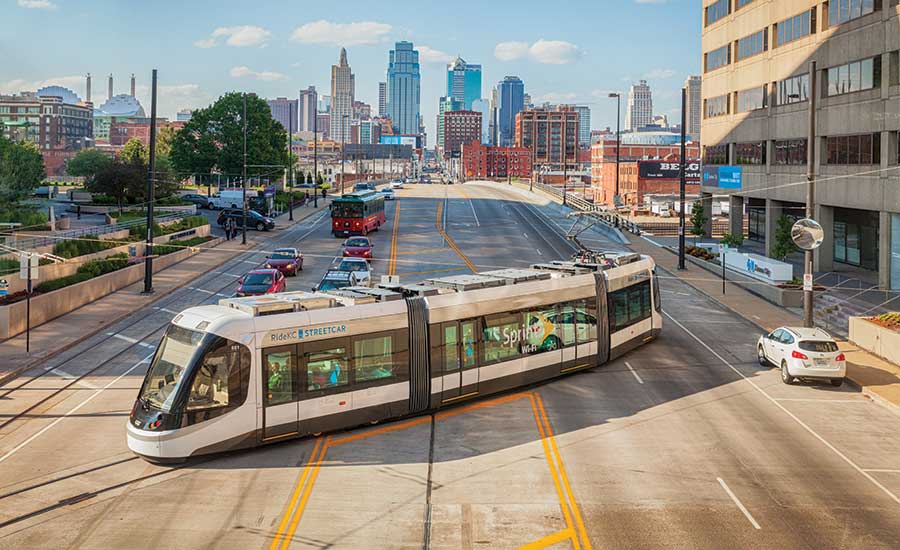
Smart Cities May Stall, But Smarter Communities Are Surging
The road to cities that know your needs may appear inviting, but be sure you know the way
By Tom Sawyer
A vision of the future with smart, efficient, utopian, technology-empowered “smart cities” has gleamed on the horizon for years. The concept offers vague promises that all of a city’s infrastructure and operations will be connecting, communicating and automatically adjusting facilities and services to deliver ever higher levels of satisfaction and efficiency.
But when you try to get close to these fabled cities that boosters periodically declare with fanfare to be rising around the world, the visions tend to resolve into failed, stalled or lagging projects, or more likely, normal cities with incremental improvements to the technological support of existing services, rather than brand new, technologically integrated cities.
Although the smart cities magic has yet to materialize, a “smarter communities” movement is growing, and there is good work in it for construction.

PATH FORWARD The $1.4-billion Meiguan Expressway in Shenzhen, China, retrofits existing roads in a dense city. Designer CCCC First Highway Consultants Co. had to work around 3,700 underground pipelines, eight grade-separated junctions and heavy traffic. Pramod Gupta, general engineer of FHCC's BIM center, says Shenzhen is a very advanced and wealthy city and is planning its digital future. Gupta says this BIM is to be "part of a mega-BIM platform so they can manage all the city's projects in a single platform during construction and management." It captures subsurface utilities, surface features and aerial space constraints. It was created and is maintained with an array of mostly Bentley products.
Image: Courtesy of CCCC First Highway Consultants Co.
Emerald Cities
“There are too many people claiming smart cities this and smart cities that … and not a lot of recordable examples,” admits Paul Doherty, president and CEO of The Digit Group, a development company specializing in smart city consulting in China, Southeast Asia, Australia, India, the Middle East, Europe and the U.S. “What we are witnessing and delivering are urban solutions that improve safety, security and quality of life,” he says, adding, “the operative word is ‘delivering.’ ”
“There are different definitions of smart cities projects, causing confusion of just what a smart city is …and isn’t,” Doherty says. Another factor is that many city-scale projects are still in the planning process. “In our case, we have two master plan/feasibility study greenfield cities on the boards, but we also have four district-scale smart city developments, and three transportation initiatives for existing cities. We call all of these smart cities solutions.”
Examples of district-scale implementations are projects by Beirut-based Khatib & Alami (K&A) to create digital platforms for national-scale operations of the Saudi Saline Water Conversion Corp. and the kingdom’s National Grid. The firm also designed a nearly greenfield development of an integrated water revenue collection system covering one million customers in the Erbile region of Kurdistan.
Building GIS-based asset inventories and creating IT infrastructure and platforms to international standards for such projects are keys to laying smart city foundations. K&A has designed and built advanced data centers, both main and disaster recovery, based on those standards and best practices that are proven, expandable and modular, allowing integration with additional systems and layers and the evolution of smart utility concepts, according to Marwan Kaakour, senior manager of solutions and services.
But such success stories are not yet echoed in the rise of greenfield smart cities. Doherty attributes “the lack of results” to the time lag public projects naturally have, and the fact that some of the projects are entire cities requiring five- to 15-year build-outs. However, the biggest issue, he says, is that it’s not easy designing and building a digital city and making the economics of it work as a business. “The reason we work in both macro (master planning) and micro (innovation delivery) is to keep the momentum going,” he says.
“It seems that at this point, the people making money with smart cities are smart cities conference organizers,” Doherty adds.
A few greenfield cities have risen, but with tempered aspirations and are populating slowly, such as the Songdo International Business District near Inchon, South Korea, (ENR 12/12/2011 p. 32) which has about one-third as many residents as was projected when construction began in 2011. That raises a people issue: If you build it, will they come?

SAUDI WATER The creation of district-scale smart utility operations systems, like the one monitored at this water dispatch center that distributes water from the largest desalinization facility in the world and covers the entire Kingdom of Saudi Arabia, has the advantage of a cohesive management operation and geographic footprint.
Photo: Courtesy of Khatib & Alami
Other initiatives, like Masdar City in Abu Dhabi, have sharply curtailed ambitions or, like several in Saudi Arabia, are gestating in the planning stages—such as the proposed $500-billion megacity, NEOM, announced last October and advertised to rise at the northeastern corner of the Red Sea on a 10,000-sq-mile site.
Doherty says his firm provides master planning services on NEOM for the Kingdom’s Ministry of Economy and Planning, and also is in a joint venture with McKinsey & Co. to provide consulting services to the Royal Court. “We have master planned the conceptual Phase I plans for three of the five major districts that make up this massive project,” Doherty says. “The size is approximately 564 San Franciscos, and just about everyone I know says they are involved—with most of them being interviewed but not contracted yet.”
Chasing Mirages
Saudi Arabia, with its vast resources and needs, has an opportunity “to leapfrog technology and apply it to smart cities,” says Jordan Cram, CEO of Enstoa, a New York City-based systems integration consultancy that offers a data-driven, evidence-based approach to capital project development. But, he says, there is a big obstacle: “What’s lacking is a consistent vision of what smart cities can do and should do. We’re still in old practices, old approaches, bricks and mortar.”
Cram says Enstoa is engaged with entities that are funded by the kingdom’s Sovereign Wealth Fund, which acts as a holding company to fund the separate companies controlling each smart city project. Enstoa’s task is to set up traditional software integrations and project controls for four of the cities, and related to that, to help instill the smart city vision at the highest levels of management. “We are setting up the infrastructure, strategy and approach that will deliver a smart city.”
“There’s so much hype, and there’s no shortage of software vendors saying they are going to solve all of the problems. Everyone is chasing the mirage, and most of the time, when people chase a mirage, the same thing happens: They die in the desert because they can’t get there,” Cram says. “What’s missing is a vision for data and how data can change everything. Very few vendors are actually conversant in data, and the premise of a smart city is its data … it’s the digital twin.”
Doherty and Cram both say the key to creating a smart city has to come with the proper structuring of its data foundations from the beginning, including what Doherty says is termed the “level of proximity” that “most people who use BIM to generate and author data do not even think of in the AEC process.”
LOP is used to describe not just the physical proximity of one thing to another, but the functional proximity, Doherty confirms. Even though a model might have a fully geo-referenced and rectified 3D picture of a city and its objects, unless an object is associated with other objects that define it as part of a functional family like “street lights” or “bus stops” or “sewer lines” so it can be referenced and analyzed, it’s still just a lot of points that are not collected around their common purpose. The points can’t become digital twins of physical objects until the data is structured into level-of-proximity families, “and so far the AEC industry hasn’t seen much reason to do that,” Doherty says.
Even though the newly minted smart city remains elusive, operational efficiency gains are starting to take hold in cities around the world where technology is being used to create digital twins of critical assets and infrastructure. While the results may not yet be magical, the improvements are real. In those communities, digital foundations are being laid to create smart services, and the process of developing those may yet lead to great things. However, one barrier to consolidated systems such as electrical, water, sewer or gas utilities, is that they often do not have congruent service areas, and co-financing capital projects like consolidated operations systems is a bridge too far, especially when improving operations independently can pay good dividends more easily.
Smarter Communities
In 2016, Peter Williams, the chief technology officer for IBM’s Big Green Innovations, wrote an essay about the term “smart city.” He noted that smart cities are a manifestation of the internet of things, in that they involve the use of sensors to generate data that can be communicated, integrated and analyzed “to enable some aspect of city life to function better in some way.”
But Williams decided the word “city” itself is too inexact. It fails to allow for the spectrum of communities that can benefit from such intelligence, ranging from hamlets and villages to vast metropolitan regions that span multiple jurisdictions, or that the value of “smartness” will be found in the purpose served, one that often extends beyond the confines of any particular political jurisdiction.
“There are choices to be made about the applications to which the IoT is put, and about the dimensions of smart which the community pursues,” Williams wrote, and then added, “perhaps the one constant factor that needs to be kept in mind as these choices are made is that technology will be alienating without participation, as critics of the smart cities idea have made clear. ‘Top-down’ technology does not make for compelling places to live, and will, I suspect, ultimately fail. … The definition of smart cities absolutely needs to include the participatory element. How that is achieved will vary according to the political norms and customs of each country,” Williams wrote.
“Smart City has little to do with the city itself,” agrees George D. Thomas, global director for smart infrastructure at Hatch. “A significant portion of the work that goes into making it smarter is something you don’t see every day, that you shouldn’t see,” he says. The change is happening on mainframe computers and in software and processors running improved operations. “There is a tremendous amount happening behind the scenes already, invisibly, and it manifests in how we use systems and interact and change.”
Thomas also points out that the accelerating rise of autonomous robotics and transportation systems, particularly for the transport of goods and products, is making current infrastructure design obsolete. “We are still planning for and designing infrastructure the way we designed it 30, 100, 500 years ago. Yet, the world around us is rapidly evolving.
“Our everyday life is changing with embedded digital capabilities, decision-support tools and new business models,” Thomas says. “A lot of stuff has been in planning for that old world, but in 15 years, do you think we will need as many parking structures? What will the flight lines look like? The types of jobs that will exist in airports will be completely different. In 15 years the way we build ports and airports will look fundamentally different; you can build a port that does not require a human to go into it. No light, no heat, no safety requirements. In 15 years all of these technologies will be so mature that there will be parts of our supply chain that we will never have to touch as human beings.”

NEW YORK CITY PERMITS A new live map system in New York City updates every day with construction activity data, flowing all permits for major construction with drillable details out for public review.
Image: NYC Dept. of Buildings
It’s not about “smart” as an absolute quality. It’s just about smarter. And smarter means different things in different places, says Thomas.
“What we deliver as smart very much depends on the geography and geopolitics and what makes sense in that location,” says Thomas. “It has to make sense financially, and different parts of the world are trying to do different things. It’s a completely different conversation in Taipei than what you would have in Beijing, and a completely different conversation than what you would have in Sydney or in what Bill de Blasio defines as a Smart New York. What’s the best smart city? That’s an impossible question to answer.”
Gordon Feller, founder of Meeting of the Minds, a nonprofit sponsored by governments, corporate foundations and think tanks that hosts a running debate about future directions for smart cities, says that in order to clarify the term, people should think of smart cities “as a change-process, rather than a static outcome, whereby various tools—digital technologies being one type—enable increased citizen engagement, enhance hard infrastructure, build social capital and make cities more livable and resilient.” He points to Orlando, Fla., and Spokane, Wash., as two U.S. cities helping to lead by example, and starting with robust citizen engagement to set goals and priorities.
In Kansas City, Mo., Burns & McDonnell has taken a smart city approach to citizen engagement in the planning, execution and now expansion of a free 2.2-mile streetcar service downtown into an area with historically poor access and services.
The $102-million project faced the typical challenge of smart city transportation and mobility initiatives in rebuilding legacy infrastructure. Many of these tasks were assigned to Burns & McDonnell as part of its multifaceted subcontractor role on the project, which kicked off in 2012.
Water and sewer lines had to be relocated or replaced and three bridges inspected and modified. A vehicle maintenance facility had to be created to house idle streetcars. Outside funding had to be found to supplement tax dollars raised in a voter-approved Streetcar Transportation Development District. Finding funding for smart city initiatives requires planning and an ability to seek unconventional sources. Burns & McDonnell secured more than 35 letters of community support, which helped obtain a $20-million Transportation Investment Generating Economic Recovery grant from the U.S. Dept. of Transportation.
Now in service with a 1-mile expansion planned, riders have access to Wi-Fi and pedestrians can find key information at interactive kiosks. Bike-share stands are in place, and connections to bus routes enable easier travel to the airport and Amtrak station. “That’s the type of neighborhood convenience and innovation that smart cities build upon,” says David Rowe, strategic consultant for the firm.

SMART SINGAPORE IS TOP TIME-SAVER Juniper Research conducts regular studies on the progress of smart cities. One produced for Intel and O2 in March calculated the human hours saved by people as a result of various smart city initiatives. It weighed the value of impacts on mobility, like the reduction in wasted time stuck in traffic per person as a result of the implementation of intelligent traffic systems (19.5 hours); reduced waits for administrative service as a result of open data exchange between agencies (31 hours); time saved with cashless payments (1.2 hours); and time saved thanks to safer roads (7.8 hours). The study calculated the total time given back to citizens at 15 days per year. Similar calculations were made in the areas of health, safety and productivity. Taken from an infrastructure-engineering point of view, most of the gains are built upon the creation of a 3D geospatial database of physical assets, which the government of Singapore has focused on since it embarked on its Smart Nation initiative in 2014.
Source: Juniper Research
Prior to his current work with Burns & McDonnell, Rowe was a director in the mayor’s office, where he helped draw regional and national thinkers together to form and guide Kansas City’s smart city plans.“By including broad perspectives in the foundations of Kansas City’s smart city infrastructure, the initiative was able to start with a strong structure in place,” Rowe says. “The structure then supported the critical software platform that aggregates all the smart city data for visualization, analytics and policy decision-making support.”

KC STREETCAR Burns & McDonnell found substantial work helping to guide the creation of a downtown trolley project by leveraging smart city technology and funding opportunities.
Photo: Courtesy of Burns And McDonnell
Other smart city initiatives Burns & McDonnell focuses on include electric utilities. “Assets that are geo-referenced and captured into a common database in a universal format … are some components that everybody can kind of agree on in terms of smart cities,” says Meghan Calabro, director of distribution modernization. “That’s the Burns & McDonnell definition of what a smart city is, and a utility is pretty well positioned for a couple of reasons: It’s already working with the population of the community, they know the city quite well, have a lot of GIS information already and they have a skilled labor force out and about working among the existing utilities. That’s going to be really necessary working with any distributed infrastructure.”
“One of the biggest challenges is that in most parts of the country, the electric, water and gas are all provided by separate entities, as well as whoever is running the transportation system and doing the city planning. And each one of those has a different geographic footprint. It becomes very complicated when the geographic boundaries don’t fit right on top of each other. When you are ready to have some kind of consolidated community infrastructure, how do we appropriate rate recovery for the capital investment? That’s been one of the biggest challenges when cities start looking at this,” Calabro says.
But challenges open the door for innovations. “The opportunity is massive because everybody is taking a different approach,” Calabro says. “Some cities have taken a transportation slant to their smart city initiatives, and others have taken a consolidated infrastructure approach, and, hopefully, all have taken a customer-focused approach. The opportunity is to get to know the current state of our communities and their goals. And all of it will have to do with infrastructure. There is going to have to be a lot of collaboration. There are tons of opportunities.”
Doherty agrees that opportunities for AEC are blooming. For example, the IT industry has desperate need for designs to optimally support the information and communication technology infrastructure that is becoming so important; autonomous vehicles are already affecting the physical layout of cities, creating a new opportunity to rethink the urban streetscapes. Construction industry data also is becoming more and more valuable for its accuracy, due to its use and reuse, not just during design and construction, but for the life of the city.
Link to the original article here.
Published in enr.com on August 29, 2018
Published in ENR magazine on September 3, 2018
The road to cities that know your needs may appear inviting, but be sure you know the way
By Tom Sawyer
A vision of the future with smart, efficient, utopian, technology-empowered “smart cities” has gleamed on the horizon for years. The concept offers vague promises that all of a city’s infrastructure and operations will be connecting, communicating and automatically adjusting facilities and services to deliver ever higher levels of satisfaction and efficiency.
But when you try to get close to these fabled cities that boosters periodically declare with fanfare to be rising around the world, the visions tend to resolve into failed, stalled or lagging projects, or more likely, normal cities with incremental improvements to the technological support of existing services, rather than brand new, technologically integrated cities.
Although the smart cities magic has yet to materialize, a “smarter communities” movement is growing, and there is good work in it for construction.

PATH FORWARD The $1.4-billion Meiguan Expressway in Shenzhen, China, retrofits existing roads in a dense city. Designer CCCC First Highway Consultants Co. had to work around 3,700 underground pipelines, eight grade-separated junctions and heavy traffic. Pramod Gupta, general engineer of FHCC's BIM center, says Shenzhen is a very advanced and wealthy city and is planning its digital future. Gupta says this BIM is to be "part of a mega-BIM platform so they can manage all the city's projects in a single platform during construction and management." It captures subsurface utilities, surface features and aerial space constraints. It was created and is maintained with an array of mostly Bentley products.
Image: Courtesy of CCCC First Highway Consultants Co.
Emerald Cities
“There are too many people claiming smart cities this and smart cities that … and not a lot of recordable examples,” admits Paul Doherty, president and CEO of The Digit Group, a development company specializing in smart city consulting in China, Southeast Asia, Australia, India, the Middle East, Europe and the U.S. “What we are witnessing and delivering are urban solutions that improve safety, security and quality of life,” he says, adding, “the operative word is ‘delivering.’ ”
“There are different definitions of smart cities projects, causing confusion of just what a smart city is …and isn’t,” Doherty says. Another factor is that many city-scale projects are still in the planning process. “In our case, we have two master plan/feasibility study greenfield cities on the boards, but we also have four district-scale smart city developments, and three transportation initiatives for existing cities. We call all of these smart cities solutions.”
Examples of district-scale implementations are projects by Beirut-based Khatib & Alami (K&A) to create digital platforms for national-scale operations of the Saudi Saline Water Conversion Corp. and the kingdom’s National Grid. The firm also designed a nearly greenfield development of an integrated water revenue collection system covering one million customers in the Erbile region of Kurdistan.
Building GIS-based asset inventories and creating IT infrastructure and platforms to international standards for such projects are keys to laying smart city foundations. K&A has designed and built advanced data centers, both main and disaster recovery, based on those standards and best practices that are proven, expandable and modular, allowing integration with additional systems and layers and the evolution of smart utility concepts, according to Marwan Kaakour, senior manager of solutions and services.
But such success stories are not yet echoed in the rise of greenfield smart cities. Doherty attributes “the lack of results” to the time lag public projects naturally have, and the fact that some of the projects are entire cities requiring five- to 15-year build-outs. However, the biggest issue, he says, is that it’s not easy designing and building a digital city and making the economics of it work as a business. “The reason we work in both macro (master planning) and micro (innovation delivery) is to keep the momentum going,” he says.
“It seems that at this point, the people making money with smart cities are smart cities conference organizers,” Doherty adds.
A few greenfield cities have risen, but with tempered aspirations and are populating slowly, such as the Songdo International Business District near Inchon, South Korea, (ENR 12/12/2011 p. 32) which has about one-third as many residents as was projected when construction began in 2011. That raises a people issue: If you build it, will they come?

SAUDI WATER The creation of district-scale smart utility operations systems, like the one monitored at this water dispatch center that distributes water from the largest desalinization facility in the world and covers the entire Kingdom of Saudi Arabia, has the advantage of a cohesive management operation and geographic footprint.
Photo: Courtesy of Khatib & Alami
Other initiatives, like Masdar City in Abu Dhabi, have sharply curtailed ambitions or, like several in Saudi Arabia, are gestating in the planning stages—such as the proposed $500-billion megacity, NEOM, announced last October and advertised to rise at the northeastern corner of the Red Sea on a 10,000-sq-mile site.
Doherty says his firm provides master planning services on NEOM for the Kingdom’s Ministry of Economy and Planning, and also is in a joint venture with McKinsey & Co. to provide consulting services to the Royal Court. “We have master planned the conceptual Phase I plans for three of the five major districts that make up this massive project,” Doherty says. “The size is approximately 564 San Franciscos, and just about everyone I know says they are involved—with most of them being interviewed but not contracted yet.”
Chasing Mirages
Saudi Arabia, with its vast resources and needs, has an opportunity “to leapfrog technology and apply it to smart cities,” says Jordan Cram, CEO of Enstoa, a New York City-based systems integration consultancy that offers a data-driven, evidence-based approach to capital project development. But, he says, there is a big obstacle: “What’s lacking is a consistent vision of what smart cities can do and should do. We’re still in old practices, old approaches, bricks and mortar.”
Cram says Enstoa is engaged with entities that are funded by the kingdom’s Sovereign Wealth Fund, which acts as a holding company to fund the separate companies controlling each smart city project. Enstoa’s task is to set up traditional software integrations and project controls for four of the cities, and related to that, to help instill the smart city vision at the highest levels of management. “We are setting up the infrastructure, strategy and approach that will deliver a smart city.”
“There’s so much hype, and there’s no shortage of software vendors saying they are going to solve all of the problems. Everyone is chasing the mirage, and most of the time, when people chase a mirage, the same thing happens: They die in the desert because they can’t get there,” Cram says. “What’s missing is a vision for data and how data can change everything. Very few vendors are actually conversant in data, and the premise of a smart city is its data … it’s the digital twin.”
Doherty and Cram both say the key to creating a smart city has to come with the proper structuring of its data foundations from the beginning, including what Doherty says is termed the “level of proximity” that “most people who use BIM to generate and author data do not even think of in the AEC process.”
LOP is used to describe not just the physical proximity of one thing to another, but the functional proximity, Doherty confirms. Even though a model might have a fully geo-referenced and rectified 3D picture of a city and its objects, unless an object is associated with other objects that define it as part of a functional family like “street lights” or “bus stops” or “sewer lines” so it can be referenced and analyzed, it’s still just a lot of points that are not collected around their common purpose. The points can’t become digital twins of physical objects until the data is structured into level-of-proximity families, “and so far the AEC industry hasn’t seen much reason to do that,” Doherty says.
Even though the newly minted smart city remains elusive, operational efficiency gains are starting to take hold in cities around the world where technology is being used to create digital twins of critical assets and infrastructure. While the results may not yet be magical, the improvements are real. In those communities, digital foundations are being laid to create smart services, and the process of developing those may yet lead to great things. However, one barrier to consolidated systems such as electrical, water, sewer or gas utilities, is that they often do not have congruent service areas, and co-financing capital projects like consolidated operations systems is a bridge too far, especially when improving operations independently can pay good dividends more easily.
Smarter Communities
In 2016, Peter Williams, the chief technology officer for IBM’s Big Green Innovations, wrote an essay about the term “smart city.” He noted that smart cities are a manifestation of the internet of things, in that they involve the use of sensors to generate data that can be communicated, integrated and analyzed “to enable some aspect of city life to function better in some way.”
But Williams decided the word “city” itself is too inexact. It fails to allow for the spectrum of communities that can benefit from such intelligence, ranging from hamlets and villages to vast metropolitan regions that span multiple jurisdictions, or that the value of “smartness” will be found in the purpose served, one that often extends beyond the confines of any particular political jurisdiction.
“There are choices to be made about the applications to which the IoT is put, and about the dimensions of smart which the community pursues,” Williams wrote, and then added, “perhaps the one constant factor that needs to be kept in mind as these choices are made is that technology will be alienating without participation, as critics of the smart cities idea have made clear. ‘Top-down’ technology does not make for compelling places to live, and will, I suspect, ultimately fail. … The definition of smart cities absolutely needs to include the participatory element. How that is achieved will vary according to the political norms and customs of each country,” Williams wrote.
“Smart City has little to do with the city itself,” agrees George D. Thomas, global director for smart infrastructure at Hatch. “A significant portion of the work that goes into making it smarter is something you don’t see every day, that you shouldn’t see,” he says. The change is happening on mainframe computers and in software and processors running improved operations. “There is a tremendous amount happening behind the scenes already, invisibly, and it manifests in how we use systems and interact and change.”
Thomas also points out that the accelerating rise of autonomous robotics and transportation systems, particularly for the transport of goods and products, is making current infrastructure design obsolete. “We are still planning for and designing infrastructure the way we designed it 30, 100, 500 years ago. Yet, the world around us is rapidly evolving.
“Our everyday life is changing with embedded digital capabilities, decision-support tools and new business models,” Thomas says. “A lot of stuff has been in planning for that old world, but in 15 years, do you think we will need as many parking structures? What will the flight lines look like? The types of jobs that will exist in airports will be completely different. In 15 years the way we build ports and airports will look fundamentally different; you can build a port that does not require a human to go into it. No light, no heat, no safety requirements. In 15 years all of these technologies will be so mature that there will be parts of our supply chain that we will never have to touch as human beings.”

NEW YORK CITY PERMITS A new live map system in New York City updates every day with construction activity data, flowing all permits for major construction with drillable details out for public review.
Image: NYC Dept. of Buildings
It’s not about “smart” as an absolute quality. It’s just about smarter. And smarter means different things in different places, says Thomas.
“What we deliver as smart very much depends on the geography and geopolitics and what makes sense in that location,” says Thomas. “It has to make sense financially, and different parts of the world are trying to do different things. It’s a completely different conversation in Taipei than what you would have in Beijing, and a completely different conversation than what you would have in Sydney or in what Bill de Blasio defines as a Smart New York. What’s the best smart city? That’s an impossible question to answer.”
Gordon Feller, founder of Meeting of the Minds, a nonprofit sponsored by governments, corporate foundations and think tanks that hosts a running debate about future directions for smart cities, says that in order to clarify the term, people should think of smart cities “as a change-process, rather than a static outcome, whereby various tools—digital technologies being one type—enable increased citizen engagement, enhance hard infrastructure, build social capital and make cities more livable and resilient.” He points to Orlando, Fla., and Spokane, Wash., as two U.S. cities helping to lead by example, and starting with robust citizen engagement to set goals and priorities.
In Kansas City, Mo., Burns & McDonnell has taken a smart city approach to citizen engagement in the planning, execution and now expansion of a free 2.2-mile streetcar service downtown into an area with historically poor access and services.
The $102-million project faced the typical challenge of smart city transportation and mobility initiatives in rebuilding legacy infrastructure. Many of these tasks were assigned to Burns & McDonnell as part of its multifaceted subcontractor role on the project, which kicked off in 2012.
Water and sewer lines had to be relocated or replaced and three bridges inspected and modified. A vehicle maintenance facility had to be created to house idle streetcars. Outside funding had to be found to supplement tax dollars raised in a voter-approved Streetcar Transportation Development District. Finding funding for smart city initiatives requires planning and an ability to seek unconventional sources. Burns & McDonnell secured more than 35 letters of community support, which helped obtain a $20-million Transportation Investment Generating Economic Recovery grant from the U.S. Dept. of Transportation.
Now in service with a 1-mile expansion planned, riders have access to Wi-Fi and pedestrians can find key information at interactive kiosks. Bike-share stands are in place, and connections to bus routes enable easier travel to the airport and Amtrak station. “That’s the type of neighborhood convenience and innovation that smart cities build upon,” says David Rowe, strategic consultant for the firm.

SMART SINGAPORE IS TOP TIME-SAVER Juniper Research conducts regular studies on the progress of smart cities. One produced for Intel and O2 in March calculated the human hours saved by people as a result of various smart city initiatives. It weighed the value of impacts on mobility, like the reduction in wasted time stuck in traffic per person as a result of the implementation of intelligent traffic systems (19.5 hours); reduced waits for administrative service as a result of open data exchange between agencies (31 hours); time saved with cashless payments (1.2 hours); and time saved thanks to safer roads (7.8 hours). The study calculated the total time given back to citizens at 15 days per year. Similar calculations were made in the areas of health, safety and productivity. Taken from an infrastructure-engineering point of view, most of the gains are built upon the creation of a 3D geospatial database of physical assets, which the government of Singapore has focused on since it embarked on its Smart Nation initiative in 2014.
Source: Juniper Research
Prior to his current work with Burns & McDonnell, Rowe was a director in the mayor’s office, where he helped draw regional and national thinkers together to form and guide Kansas City’s smart city plans.“By including broad perspectives in the foundations of Kansas City’s smart city infrastructure, the initiative was able to start with a strong structure in place,” Rowe says. “The structure then supported the critical software platform that aggregates all the smart city data for visualization, analytics and policy decision-making support.”

KC STREETCAR Burns & McDonnell found substantial work helping to guide the creation of a downtown trolley project by leveraging smart city technology and funding opportunities.
Photo: Courtesy of Burns And McDonnell
Other smart city initiatives Burns & McDonnell focuses on include electric utilities. “Assets that are geo-referenced and captured into a common database in a universal format … are some components that everybody can kind of agree on in terms of smart cities,” says Meghan Calabro, director of distribution modernization. “That’s the Burns & McDonnell definition of what a smart city is, and a utility is pretty well positioned for a couple of reasons: It’s already working with the population of the community, they know the city quite well, have a lot of GIS information already and they have a skilled labor force out and about working among the existing utilities. That’s going to be really necessary working with any distributed infrastructure.”
“One of the biggest challenges is that in most parts of the country, the electric, water and gas are all provided by separate entities, as well as whoever is running the transportation system and doing the city planning. And each one of those has a different geographic footprint. It becomes very complicated when the geographic boundaries don’t fit right on top of each other. When you are ready to have some kind of consolidated community infrastructure, how do we appropriate rate recovery for the capital investment? That’s been one of the biggest challenges when cities start looking at this,” Calabro says.
But challenges open the door for innovations. “The opportunity is massive because everybody is taking a different approach,” Calabro says. “Some cities have taken a transportation slant to their smart city initiatives, and others have taken a consolidated infrastructure approach, and, hopefully, all have taken a customer-focused approach. The opportunity is to get to know the current state of our communities and their goals. And all of it will have to do with infrastructure. There is going to have to be a lot of collaboration. There are tons of opportunities.”
Doherty agrees that opportunities for AEC are blooming. For example, the IT industry has desperate need for designs to optimally support the information and communication technology infrastructure that is becoming so important; autonomous vehicles are already affecting the physical layout of cities, creating a new opportunity to rethink the urban streetscapes. Construction industry data also is becoming more and more valuable for its accuracy, due to its use and reuse, not just during design and construction, but for the life of the city.
Link to the original article here.
Published in enr.com on August 29, 2018
Published in ENR magazine on September 3, 2018




